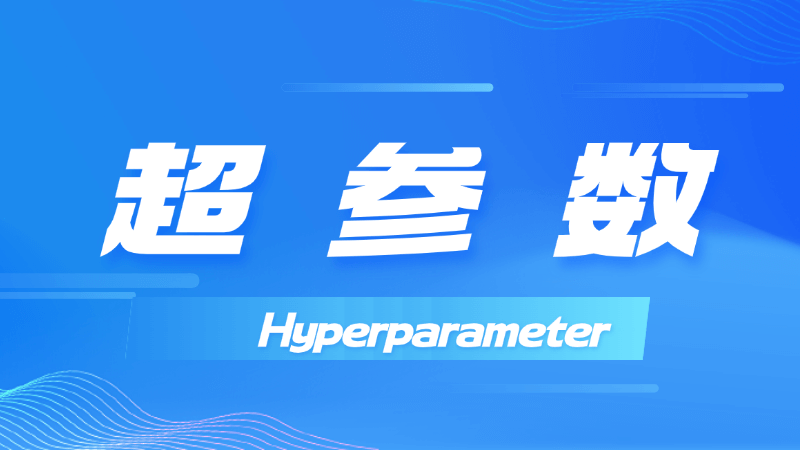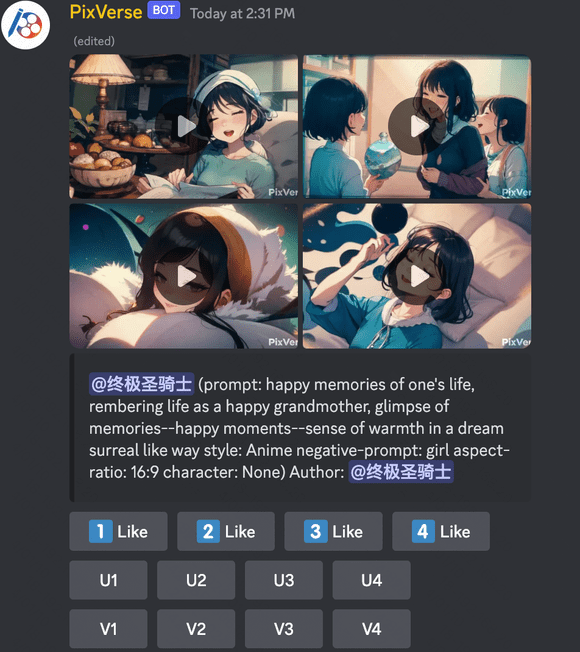Synergies and Differences between MCP Server, Function Call and Agent
With the field of Artificial Intelligence (AI), and in particular large-scale language modeling (LLM), thriving, understanding the MCP The three key concepts of Server, Function Call, and Agent are critical. They are the cornerstones of an AI system, and each plays a unique and interrelated role. A deeper understanding of their relationships and differences will help us design and apply AI systems more effectively, thus unlocking the full potential of big models.
In this paper, we will analyze the definitions, functions, interaction modes, and application scenarios of MCP Server, Function Call, and Agent from a technical point of view, and help readers understand the value and significance of these three in practical applications through vivid cases.

Positioning Analysis: From Toolbox to Intelligent Assistant
MCP Server: standardized data and capability interface
MCP Server (Model Context Protocol Server), i.e. Model Context Protocol Server, is a server-side program based on a standardized protocol. Its core role is to provide external data and functional support for the Large Language Model (LLM). It can be understood as a standardized tool interface . For example, Fetch MCP Server is capable of crawling web content, while Google Drive MCP Server enables the reading of files from the cloud.
The key feature of MCP Server is its passivity . It is like a toolbox that quietly waits for instructions, performs the appropriate action only after receiving an explicit call request, and does not actively participate in the decision-making or reasoning process.

The following code shows how to pass the curl command invokes Firecrawl MCP Server to crawl web content:
**curl -X POST **[http://localhost:8080/crawl](https://www.google.com/url?sa=E&q=http%3A%2F%2Flocalhost%3A8080%2Fcrawl)
-H "Content-Type: application/json"
-d '{"url": "[https://example.com](https://www.google.com/url?sa=E&q=https%3A%2F%2Fexample.com)", "options": {"pageOptions": {"onlyMainContent": true}}}'
Function Call: Lightweight Toolset Built into the Model
Function Call, or function call, is a capability that the big model itself has. It allows the model to directly call pre-defined functions, and can generate the parameters required by the function, and ultimately integrate the results of the function's execution. This mechanism gives the big model the ability to directly extend its own functionality. Lightweight toolset. For example, with Function Call, the model can easily implement functions such as weather queries and simple math calculations.
The essence of a Function Call is Code-level tool extensions It is usually deployed in close conjunction with the model. Function Call can be compared to a built-in Swiss Army Knife, although the function is relatively simple, but the advantage is that it is lightweight and fast, and can be directly embedded into the model to accomplish some lightweight tasks.

The following code example shows how to use Function Call to implement the weather query function:
**functions = [**
{
"name": "get_current_weather",
"description": "获取指定城市的天气",
"parameters": {
"type": "object",
"properties": {"location": {"type": "string"}},
"required": ["location"]
}
}
]
Agent: Intelligent Assistant for Autonomous Decision Making
An Agent, or Intelligent Body, is a more complex AI entity. It doesn't just passively execute commands, but also has the ability to Autonomous decision-making capacity The Agent is able to perceive the surrounding environment and understand the user's needs. Agent is able to sense the surrounding environment, understand user needs, and proactively plan task execution steps. In order to accomplish the set goal, the Agent can flexibly call various tools, including MCP Server and Function Call. For example, when the Agent receives the task of "writing a report on AI trends", it can autonomously analyze the task and plan the steps, such as capturing the relevant data, then analyzing the content, and finally generating the report.
Agent's role is more like a intelligent assistant It not only selects the right tools, but also skillfully combines various tools according to the specific needs of the task and collaborates to complete complex task processes.

Functionality comparison: from data provisioning to complex task orchestration
MCP Server: Focusing on the provisioning of data and functional interfaces
The functionality of MCP Server is relatively focused, with the core focus on providing Data and Functional Interfaces It can perform operations such as web crawling, file reading, and API calls. It can perform operations such as web crawling, file reading, API calls, etc., but itself Not capable of reasoning The
Advantage: MCP Server adopts modularized design, which is easy for independent development and function expansion. Different data sources and functions can be encapsulated into independent MCP Server modules for easy management and maintenance.
Limitations: MCP Server can only passively respond to requests and cannot actively think and solve problems. Its role is more in favor of providing basic tools and data support.

Function Call: lightweight, low-latency task processing
Function Call is better suited to handle Simple, low latency of task scenarios, such as real-time translation, sentiment analysis, and so on. Since Function Call is tightly integrated with the model itself, the reasoning process can be Quick Call It's very efficient.
Advantage: Function Call is efficient and convenient. Since it is called inside the model, it avoids additional communication overhead and provides faster response.
Limitations: The functionality and performance of Function Call is limited by the model's runtime resources and is not suitable for performing computationally intensive or time-consuming tasks.

Agent: Intelligent Orchestration and Execution of Complex Tasks
The power of the Agent lies in its ability to handle Complex, end-to-end of the task. It is capable of Sense user needs, reason and plan, and drive multi-step task execution For example, Agent can call multiple MCP Servers to accomplish cross-platform data integration or combine with Function Call to realize dynamic policy adjustment. For example, Agent can call multiple MCP Servers to accomplish cross-platform data integration, or combine with Function Call to realize dynamic adjustment of policies.
Advantage: Agent has a high degree of autonomy and can support complex workflows and task scheduling. It is more like an automated workflow engine with some intelligence.
Limitations: The development complexity of Agent is relatively high, requiring the integration of components such as inference frameworks, task planning modules, and state management mechanisms.

Interaction: passive response vs. active collaboration
MCP Server: Unidirectional Request and Response Model
MCP Server uses Passive service model The interaction is a one-way request and response. Only when receiving the request from the client (such as LLM or Agent), MCP Server will return the corresponding data or execution result. For example, when the model needs to capture web page content, it will send a request to MCP Server through HTTP/SSE and other protocols, and MCP Server will return the result to the model after completing the data capture.
Function Call: internal trigger at model runtime
The execution of a Function Call is handled by the Model Runtime Environment Direct Trigger . The developer needs to predefine the functions that can be called and package and deploy these functions together with the model service. This type of interaction is suitable for application scenarios with high responsiveness requirements and light task loads.
Agent: two-way communication and collaboration
Agent has a higher degree of autonomy, and it can not only Active Call Tool , and can also engage with users two-way interaction In order to better understand and meet the user's needs. For example, when the user's needs are more ambiguous, Agent can take the initiative to carry out multiple rounds of dialog with the user, уточнить details, in order to fully understand the user's intentions before executing the task.

Application scenarios: from real-time queries to automated services
Function Call: Simple tasks with high real-time requirements
Function Call is well suited to handle High real-time requirements and relatively simple task logic of the scenario. For example, when a user asks "What's the weather in Beijing today?" the model can immediately call the get_weather() function to quickly get and return weather information.
MCP Server: Cross-Platform Data Integration and Secure Calling
MCP Server is more suitable for Need to integrate data from multiple sources and have certain security requirements The complexity of the scenario. For example, an enterprise can encapsulate its internal CRM, ERP, and other systems into an MCP Server, which can provide a unified data access interface for multiple agents to call securely, realizing the interconnection of data within the enterprise.
Agent: End-to-end automated customer service
Agent, on the other hand, specializes in handling End-to-end complex task flow In the customer service field, for example, Agent can automatically monitor user feedback and intelligently analyze user problems, and even actively communicate with the user to solve the problems. For example, in the field of customer service, Agents can automatically monitor user feedback, intelligently analyze user problems, and autonomously generate corresponding solutions, or even actively communicate with users to solve problems.
Selection basis: task complexity and teamwork patterns
Task complexity: determining the choice of core components
- Simple low-latency tasks: Function Call is preferred because it is lightweight and efficient.
- Complex data integration tasks: MCP Server is better suited, as it specializes in handling data from multiple sources.
- Autonomous Decision Making Multi-Step Tasks: Agent is the best choice for task planning and autonomous execution.
Deployment flexibility: adapting to projects of different sizes
- Small projects: Function Call is deployed in conjunction with the model service, which is simple and convenient.
- Enterprise applications: MCP Server can be expanded independently, making it easier to manage and maintain.
- Large and complex systems: The Agent needs to be integrated with a variety of modules suitable for building fully functional AI systems.
Standardization of protocols: improving the efficiency of cross-team collaboration
- Function Call: The protocol is relatively flexible and the implementation depends on the specific platform.
- MCP Server: Adheres to the Model Context Protocol standard, which facilitates cross-team collaboration and system integration.
- Agent: There is a dependency on the protocol specification of the underlying tool and compatibility needs to be considered.
Collaboration Example: The Powerful Combination of Intelligentsia + Toolkit
In practice, Function Call, MCP Server and Agent often do not exist in isolation, but are cooperative work that work together to build powerful AI systems. Below is an example of a typical collaborative workflow:
- User Question: "Help me summarize the latest hot topics of discussion about AI on Zhihu."
- LLM parsing requirements: The big language model understands the user's intent, determines that it needs to get the data of the Zhihu platform, and calls the Function Call to detect the platform type.
- Function Call returns platform information: Function Call executes the platform detection function and returns the result "Knowing".
- The LLM requests the MCP Server: The big model sends a request to the pre-configured crawler MCP Server through the MCP protocol to crawl the Zhihu related web page data.
- MCP Server grabs the data and returns it: The crawler MCP Server performs web crawling tasks and returns the crawled data to the LLM.
- LLM generates summary reports: The big model analyzes and summarizes the acquired data, and finally generates a summary report on the hotspots of Zhihu AI discussions and presents it to users.

To summarize: choosing the right AI components to unlock the potential of big models
MCP Server, Function Call, and Agent play critical roles in the AI ecosystem, corresponding to the Standardized tool interfaces, lightweight built-in toolset, and intelligent assistants with autonomous decision-making capabilities The three have their own advantages and limitations. Each of the three has its own advantages and limitations, and developers need to make comprehensive considerations based on factors such as specific task complexity, team collaboration mode, and security isolation needs, and choose the most appropriate component or combination of solutions. Only through a reasonable combination and use of these three can we build an efficient, flexible and powerful AI system, and ultimately unleash the huge potential of the big language model and bring intelligent change to all industries.
© Copyright notes
Article copyright AI Sharing Circle All, please do not reproduce without permission.
Related articles

No comments...




